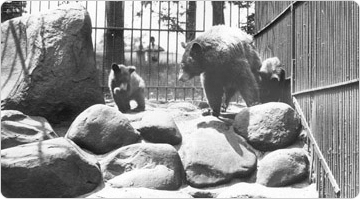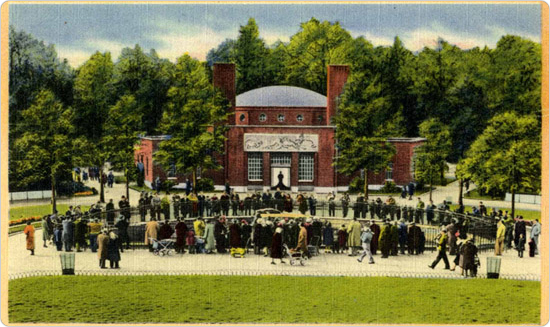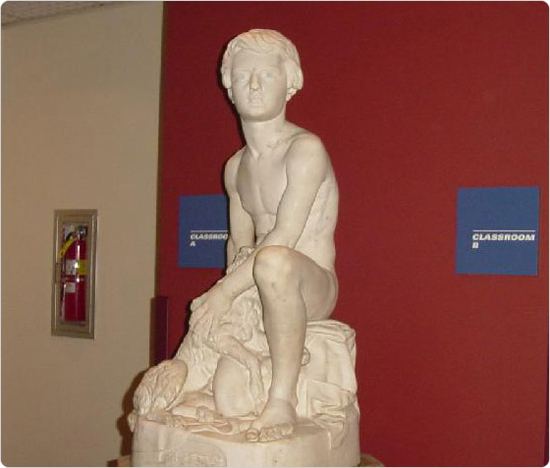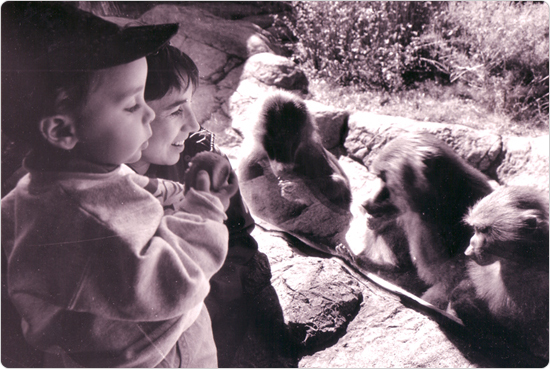History of the Prospect Park Zoo
Prospect Park operated a small menagerie in the late 1800s. An Annual Report entry in 1896, for example, details the “live stock” the Department of Brooklyn Parks owned: 59 sheep, 28 deer, a buffalo, a cow, three bears, a puma, two raccoons, ten rabbits, one dog, one eagle, eight pea fowls, eight doves, 39 Chinese geese, 15 Egyptian geese, 7 Muscovy ducks, four common ducks, and three turkeys. This collection of animals was formalized as the Prospect Park Zoo on Flatbush Avenue that opened to the public on July 3, 1935. A Works Progress Administration (WPA) project, the zoo was part of a massive citywide park improvement program initiated and executed by former Parks Commissioner Robert Moses. Governor Al Smith, already popularly known as the “night superintendent” of the Central Park Zoo, referred to himself as the “renting agent” of the Prospect Park Zoo: “two-thirds of our apartments are taken, and as far as I know, by very desirable tenants.”
Then as now, an elegant plaza and seal pool serve as the focal point of the semi-circular fan-like layout of the zoo, its geometric design distinctive in the way it departs from a traditional zoo design structured around a meandering path through animal habitats. The original animals included an elk, water bucks, deer, and elands. The seven-acre zoo also featured lions, monkeys, and birds in buildings, and hippopotami and elephants in a large domed building. A state-of-the-art ventilation system attempted to keep the cages “odorless.” There were also bear dens with boulders simulating a mountainside built into a slope facing Flatbush Avenue surrounded by a moat to keep the animals at bay.
As with its WPA cousin in Central Park, the Prospect Park Zoo showcased limestone relief work by F.G.R. Roth, still visible today; the eleven bas-reliefs are based on Rudyard Kipling's Jungle Book stories and depict Mowgli, the boy raised by wolves. An example of 19th century animal art, Lioness and Cubs by French sculptor Victor Peter, is located east of the sea lion pond; it was a gift from noted sculptor Frederick MacMonnies, who himself is represented with a dozen pieces in New York City parks (including Prospect Park's Horse Tamers). A white marble piece depicting a nude boy with a faithful dog called Boy and Dog (1866) is in the Education Center (a terra-cotta version, inscribed “Protection to the Dumb,” can be seen in the Brooklyn Museum's decorative arts galleries).
As was the case with the Central Park Zoo, time and better knowledge about the needs of animals in captivity eventually made the old Prospect Park Zoo obsolete. Through a partnership forged in the early 1980s with the City, the Wildlife Conservation Society took on the renovation and management of a new zoo in Prospect Park. The current Prospect Park Zoo opened on October 5, 1993. Ground broke for the $37 million restoration in August 1989. Some architectural elements of the old zoo were saved, such as the basic layout of the center of the zoo, but inhumane conditions that existed were eliminated. An administration building sits on the site of the former polar bear display, itself notable for a brutal death shortly before the zoo closed in 1989 when two boys entered the polar bear exhibit and were attacked (only one survived). Naturalistic habitat exhibits replaced bars, cages, and pits, and three major exhibit areas were designed to engage children in learning about wildlife: The World of Animals, Animal Lifestyles, and Animals in Our Lives. In general, the renovated zoo focuses on smaller animals, following the practice of removing larger animals to larger zoos better equipped to handle them. A sculpture project by Mags Harries, installed in 1993 and made of animal-shaped topiary frames, adorns the walkway near the Administration Building.
Related Links
Historical Sign: Boy and Dog Statue Prospect Park Wildlife Center



